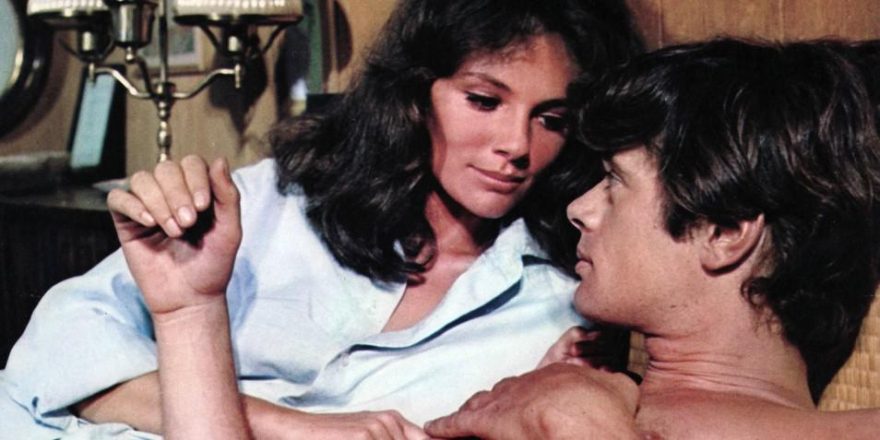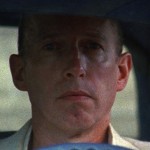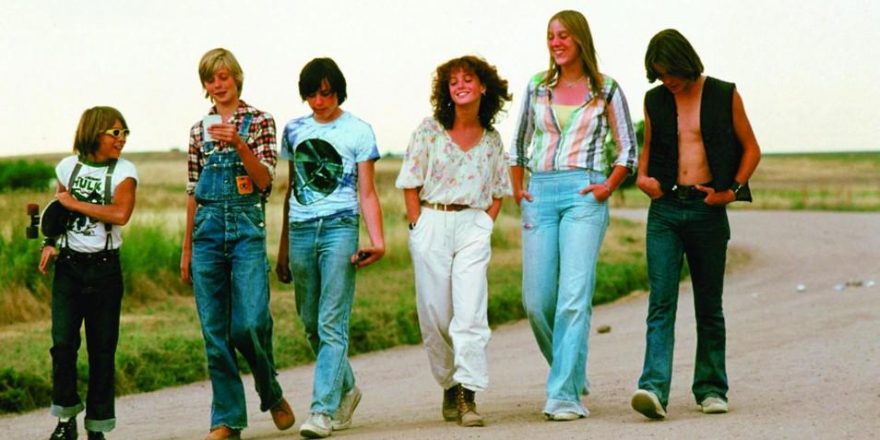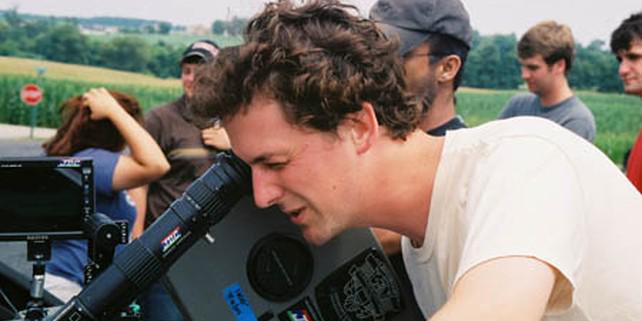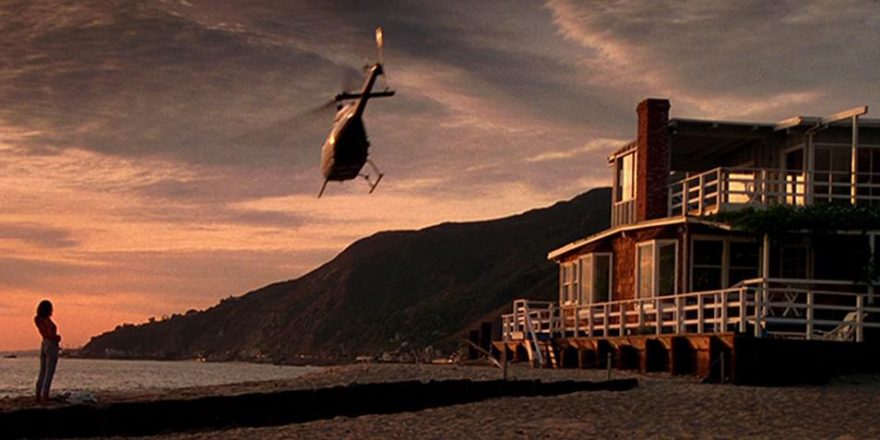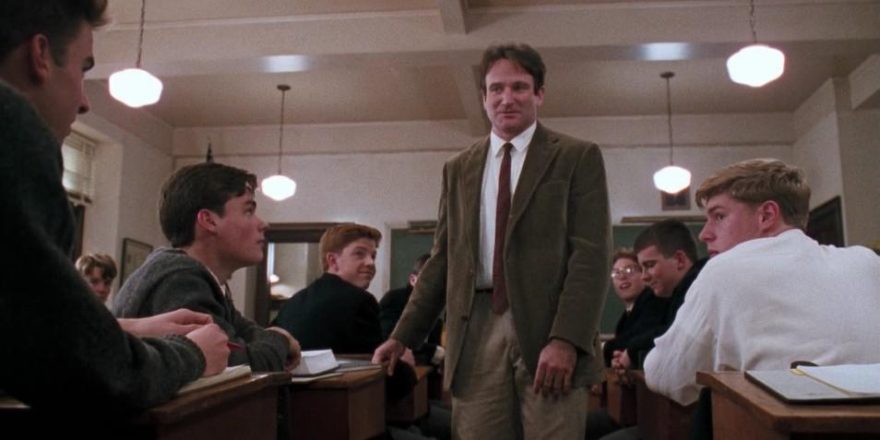For the life of me, I couldn’t tell you my favorite book, record or song, but for some reason it was easy for me, a few years back, to compose a list of my 100 favorite movies, in order. The top 10, like that of any normal person, was dominated by Sturges, Wilder, Godard, Cassavetes, Tarkovsky, Fassbinder, etc. Holding the number one spot – and for as long as I can remember my favorite movie – was not a lauded entry in the cinematic canon, but the 1968, perennial 2½ star, biker/surfer exploitation movie The Sweet Ride, directed by Harvey Hart, a journeyman who mostly worked in TV (some of it very good).
I sometimes get the feeling that my friends think my love of The Sweet Ride is a joke that has gone on for too long, but I am sincere — though I have often wondered why, myself. I have some theories. It’s ultimately personal, but it starts with the biker genre films of the Sixties; most of them are bad and harmless, yet this one was odd, different, a bit scary. Jacqueline Bisset’s entrance, rising from the Malibu surf — after losing her top — is a good start. Skinny, confused Michael Sarrazin (who surfs with his shirt on) stood in for late adolescent me, while Tony Franciosa — cool, detached, lost — stood in for who I might become. Or maybe that was Bob Denver, simultaneously goofy and cool, a beatnik pianist who the times have already passed by, constantly being fired from gigs because he plays jazz and the clubs want rock ‘n’ roll. Here’s to the losers.
I don’t know if The Sweet Ride made it to our local theater, but it was one of those movies that resurfaced endlessly on Saturday afternoons and late nights on syndicated TV channels throughout the 1970s. I saw it a little bit here, a little bit there, the story — which is told in a series of flashbacks — not making any sense to me, but parts of it compelling to the extent that I eventually started looking forward to when it was on. I think I was in equal parts drawn to the coolness (title song by Lee Hazlewood, sung by Dusty Springfield, over a collage of Sunset Strip nightlife) and repelled by the grim melodrama at the heart of the story. Bisset and Sarrazin, playing the doomed young lovers, pretty much do everything wrong.
The movie had disappeared by the early 1980s, and I had disappeared into the punk rock community while I pursued drumming and alcoholism. In the extended aftermath of my first love affair (in which I pretty much did everything wrong), I became increasingly obsessed with The Sweet Ride, perhaps more so because I had no TV and was thus unable to see it. People got sick of me talking about it, but now it occurred to me that I was in a landlocked, Ohio version of that movie. I was living in a rented house with no locks on the doors with unemployed musicians; this was the counter-culture, 15 years later. For no pay, my friend Keith and I ran a record store next to a biker tattoo shop; while we were not outlaws, we were not what the cop in The Sweet Ride, played by Percy Rodriguez, called “productive members of society.”
The movie had disappeared by the early 1980s, and I had disappeared into the punk rock community while I pursued drumming and alcoholism.One of the things that I related to so strongly was the idea of a group of guys living together — because they’re in a band, or friends, or out of convenience and because it’s a cheap place to stay. It might be more temporary to some of them, and thus they had varying degrees of emotional bonds and dependency. This idea is at the core of The Sweet Ride; three guys are crashing at a Malibu beach house, rent paid by Collie (Tony Franciosa) with money acquired through tennis hustling. Girls drop by, stay over, but can’t move in (Collie’s rules). Choo-Choo (Bob Denver) and Denny (Michael Sarrazin) don’t pay rent, but they definitely provide Collie with some kind of family-like stability. When Vickie (Jacqueline Bisset) shows up, she is well liked by all the guys, but also presents a serious threat to steal Denny’s heart — and Denny from the other two guys. When I moved out of town, eventually, abandoning my guy friends for a girlfriend, it may have even occurred to me at the time that I was like Denny splitting from Collie in the film’s best-acted, most emotional, and final scene. (Denny: “I’m tired of looking at myself at 40.” And then this heartbreaking, hurt look on Collie’s face, but quickly recovering with the veneer of cool that has allowed him to survive an unstable life without love.)
In the late 1980s, I found myself in another communal living situation, renting a cheap room in a house of musicians and artists, but now I was the old guy, my heart broken, looking for support from this temporary, surrogate family. By now, still not having been able to see the film in over a decade, I was publishing a zine I had named The Sweet Ride, featuring writing by myself and others: our take on movies, music, and culture we weren’t seeing elsewhere (except in other zines). Then it happened: The Sweet Ride played one night on a local TV station! Of course I videotaped it. Oddly, about the same time, an anonymous VHS tape showed up in the mail, also The Sweet Ride — recorded off a Minneapolis-area TV station — but this version had some of the reels out of order, so the story made no sense, and included some scenes deleted by our local station (the guys and Vickie smoking grass on the beach house deck).
After all the buildup and mythologizing (in my mind) over years of the film’s absence, one might wonder: was it a letdown? On the contrary, I found The Sweet Ride to have greater power over me than ever. In our house, we watched it again and again, and I’d even return from work sometimes to find one of my roommates watching it alone, yet again. We began quoting from it constantly, so it became like a secret language, and I incorporated lines from the movie into my everyday communication. Once I was talking to a drunk guy at a bar, listening to him complaining about women troubles, and I found myself saying, with a straight face, “Not getting involved with others is the nicest thing I can do for them. I don’t even own my own life…I just kind of rent it out from somewhere.”
By the latter half of the Nineties, the movie was still not available on video, and I tried to create a “restored” version by mixing and matching scenes from my two flawed videotapes. I even tried re-editing an alternative version with the story told chronologically, adding my own music. (Though when the original contains an entire scene with Moby Grape performing “Never Again” live, how can you top that?) I started thinking about a possible remake; I’d do it myself! — who better? But what if Hollywood took it on; what kind of disaster might that be?
Then, while visiting Los Angeles, my friend Stephanie Savage, who worked for Drew Barrymore at the time, invited me to a party at Drew’s house, a charming affair with easels and painting in the kitchen, an ice cream cart by the pool, and movies playing in the screening room. The latter was a separate building on the grounds, with actual film projectors, essentially a small theater with comfortable seats and popcorn. Stephanie had tracked down selected film prints for the occasion and — with what I’m sure was a good deal of difficulty — had actually found a print of The Sweet Ride!
She told the projectionist that I was coming, and that it was my favorite movie of all time, so he waited for my arrival to start it. People at the party wandered in and out (who sits through a whole movie at a party?), but I was oblivious to it all. Seeing the film in widescreen, I saw that it was much more artfully composed than I had ever realized. There were scenes I had never before seen. And it’s always a revelation to finally see in a theater a movie you’ve only watched on TV. So, yeah, The Sweet Ride, over the years, despite the ravages of time and the weightlessness of obscurity, somehow, against all odds, just got better and better.


